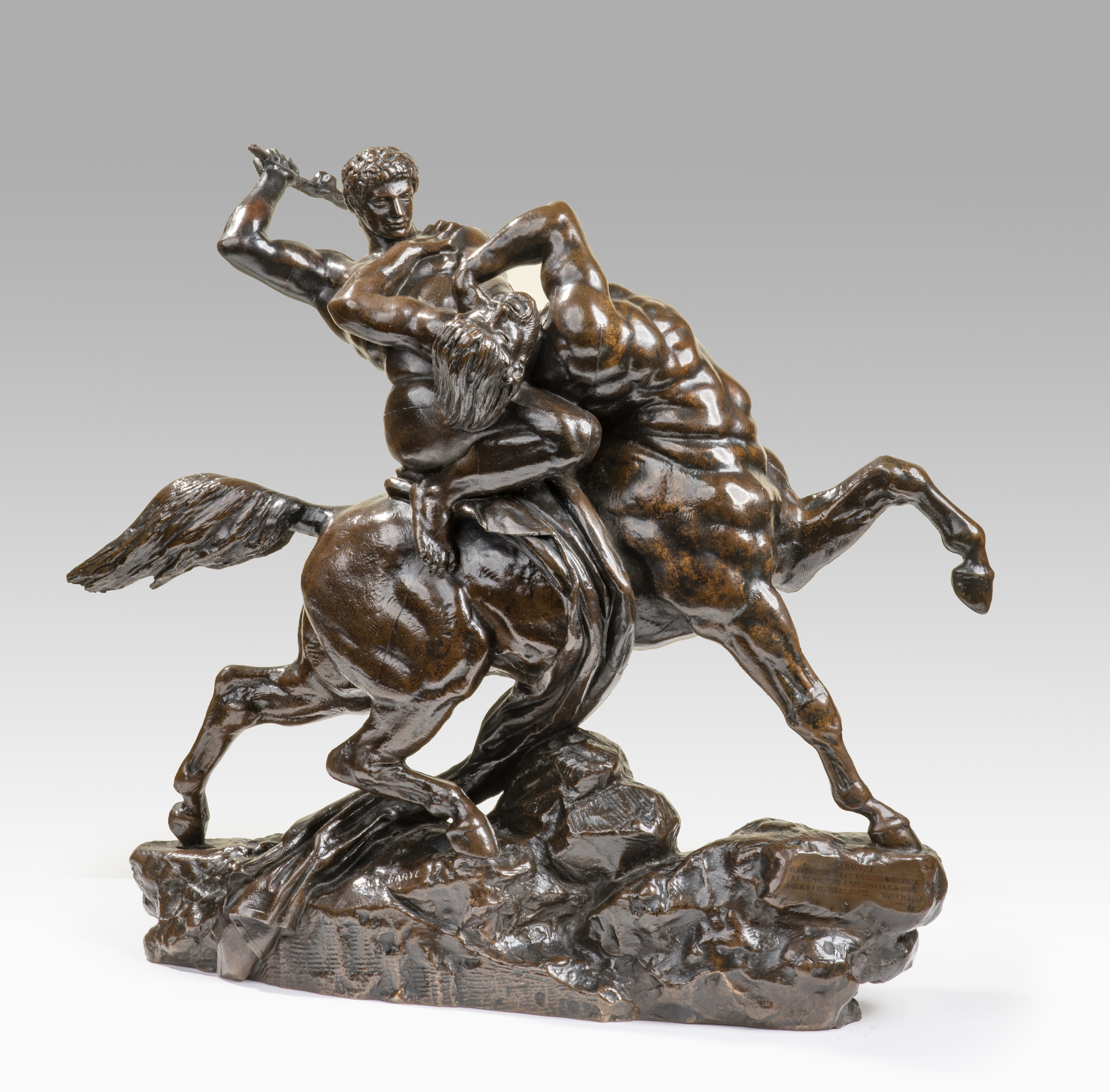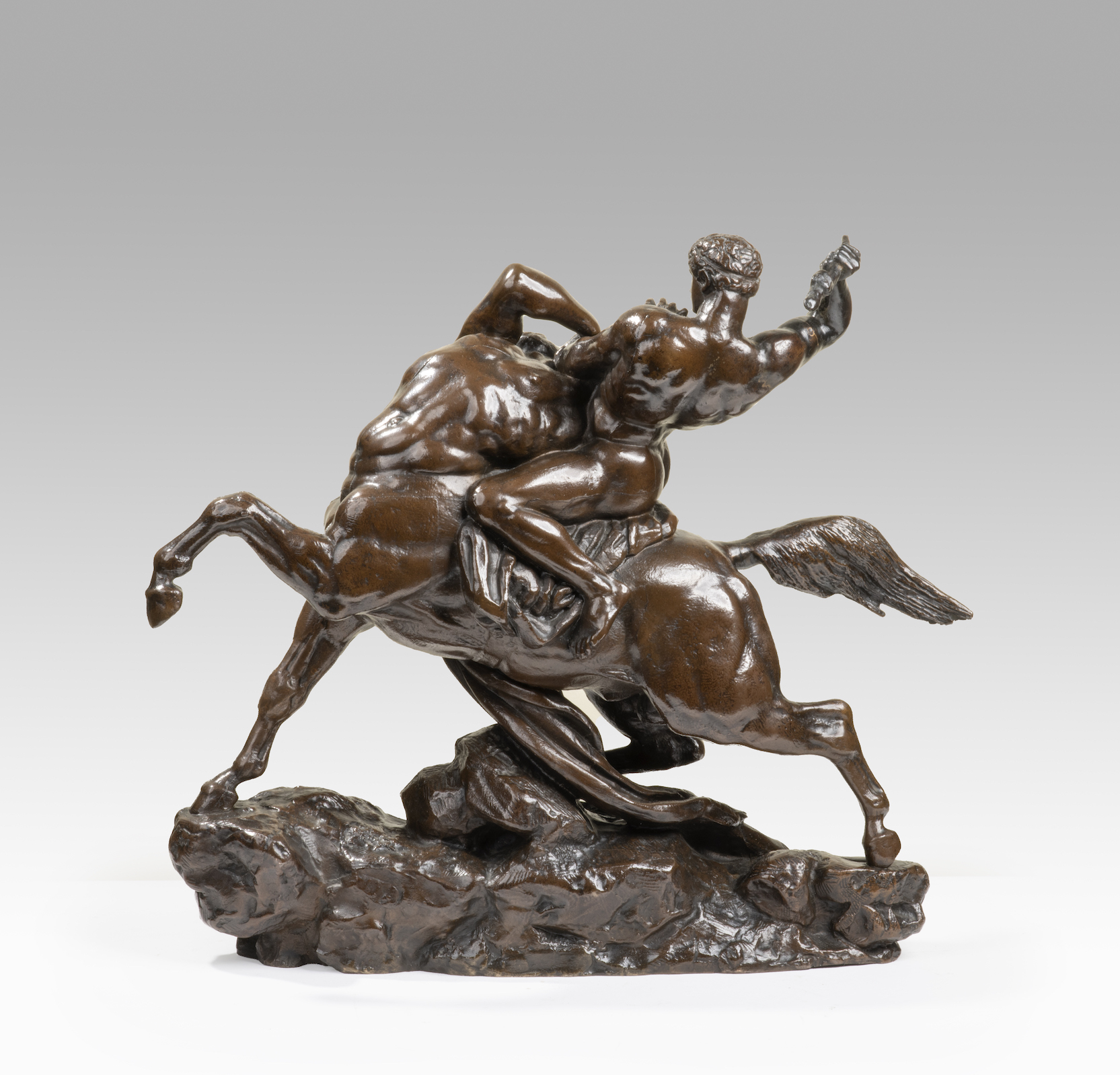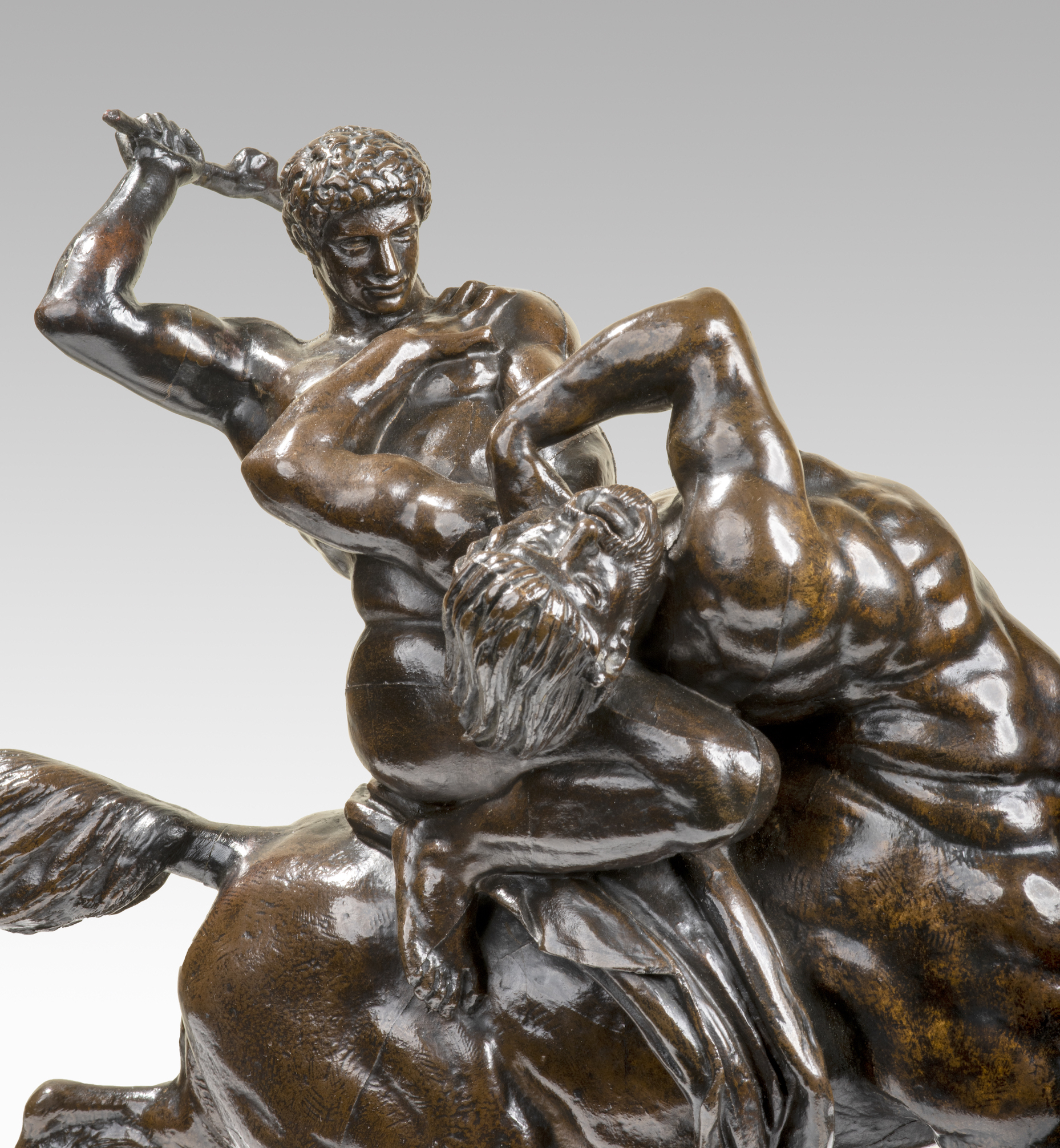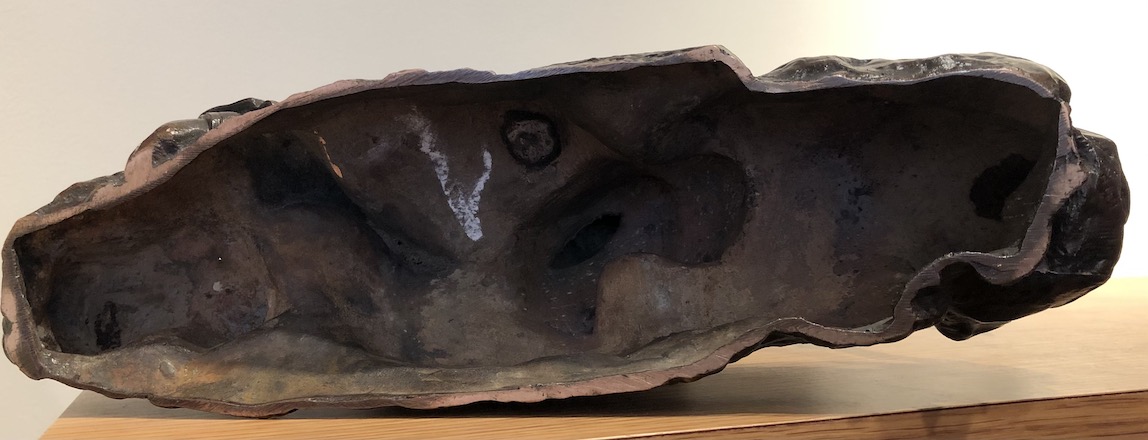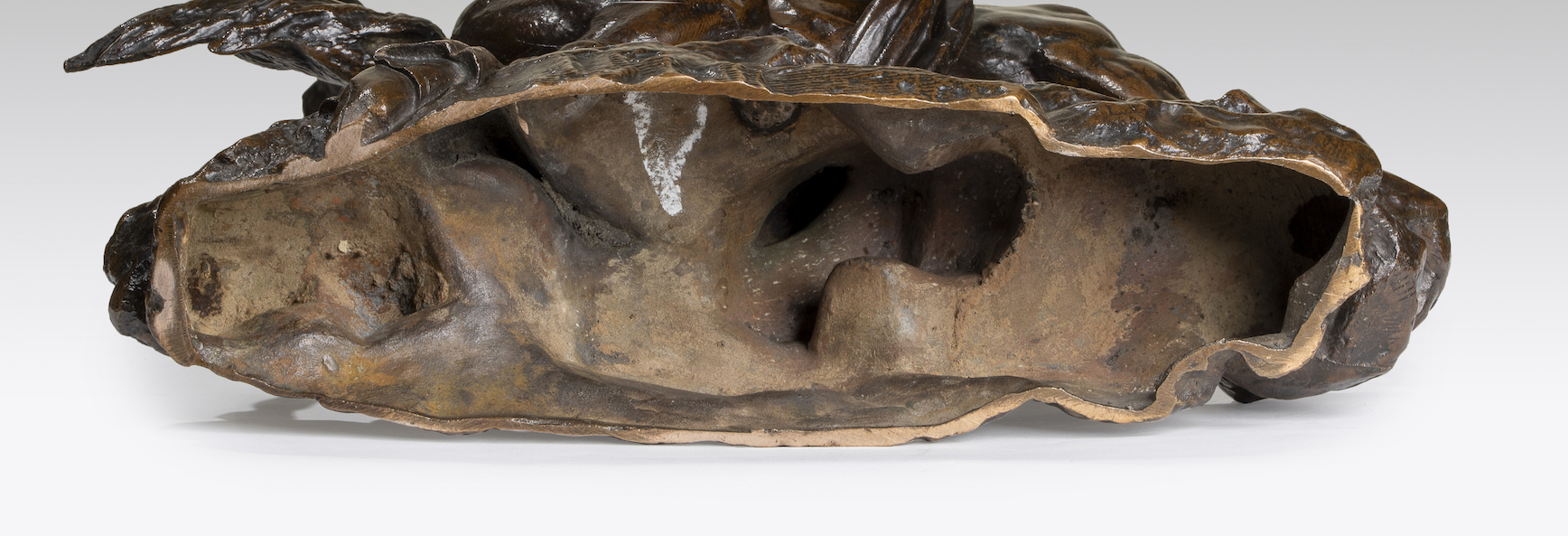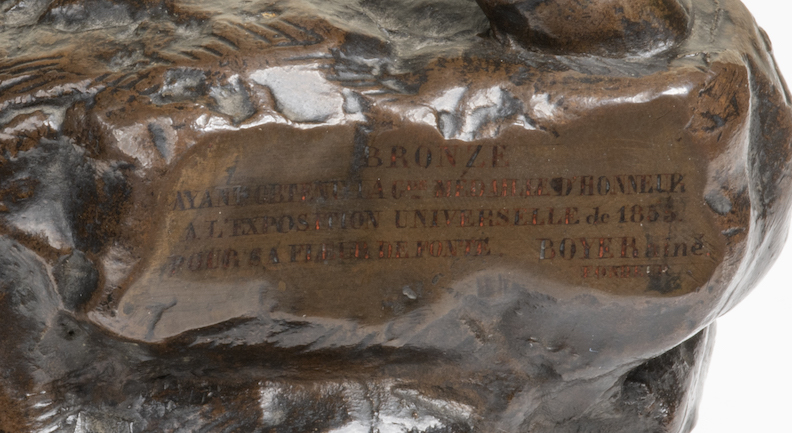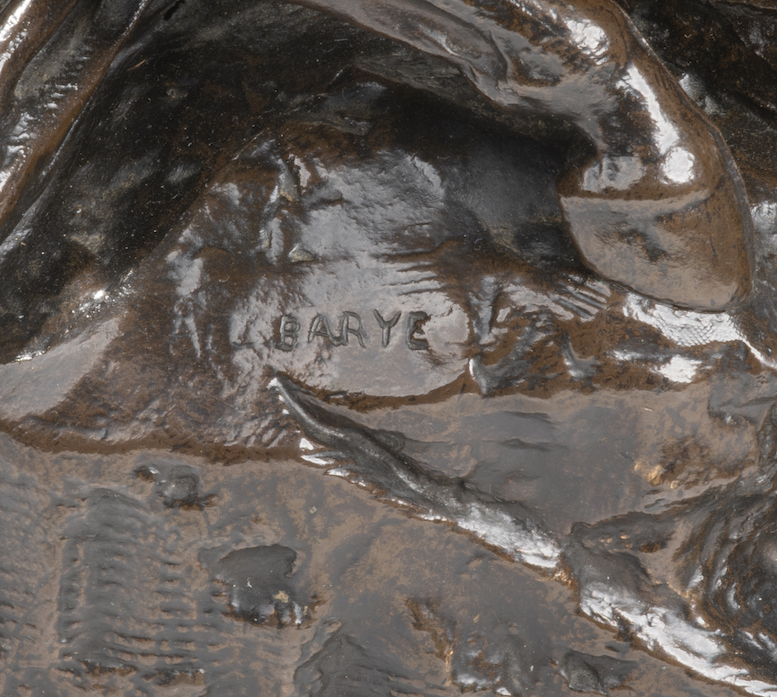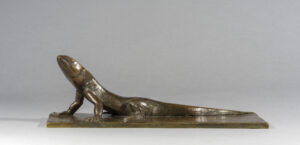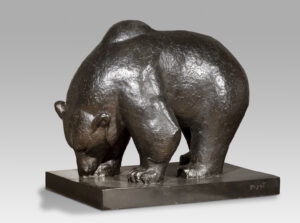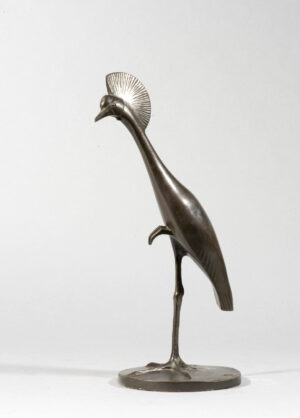Description
Originally entitled, Lapithe killing a centaur, this artist proof was modelled during the years 1846 to 1848 in view of the large sculpture model displayed at the 1850 Salon and with which it presents certain variants : position of the centaur’s foreleg, of its left hand, its plumed tail, presentation of its plinth. This artist proof, which met with great success, was exhibited with other creations ‘Jaguar devouring a hare’, ‘Theseus fighting the Minotaur’ in 1855, on the occasion of the first Universal Exhibition in France. Barye was awarded the highest distinction, the Grande Médaille d’honneur, in his category, the 17th, that of the art bronzes. The jury’s report more particularly emphasized the fine quality of the sculptor’s work, mentioning ‘the grain of the cast iron is excellent ; it has not been altered by chiselling which was merely used to remove the seams’.
This award has been engraved on the base of our copy with this mention: ‘BRONZE AYANT OBTENU LA GDE MEDAILLE D’HONNEUR A L’EXPOSITION 1855 POUR SA FLEUR DE FONTE. BOYER aîné FONDEUR’. The fact that the inscription was carved rather than moulded is a clear indication that it was on the bronze displayed in 1855.
Our copy, which has a remarkably fine quality patina and a great delicacy in the rendering of details, nonetheless presents all the seams resulting from the mould after the sand-cast process. This could appear surprising for such an artwork, which has furthermore been exhibited, as the chiselling usually comes after the cast to remove the seams and smoothly rework the bronze. The sculpture was in fact deliberately displayed with visible seams so as to show the great technical quality of the cast iron which did not need chiselling. The jury did not fail to raise this point. A letter from Barye dated 20 November 1855 confirms that the group in bronze representing a ‘Lapith killing a Centaur’, produced by the Boyer aîné foundry, had been displayed at the Exposition Universelle in 1855.
This sculpture is therefore an outstanding and rare model as a demonstration of Barye’s high quality work, which was exhibited next to a completed sculpture, the one purchased in 1855 and still held in the Victoria & Albert Museum’s collections (n° 2709-56).

